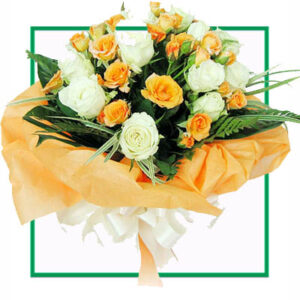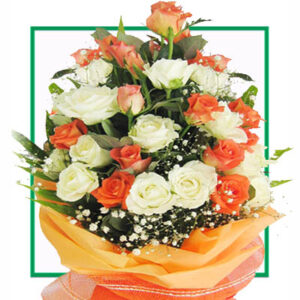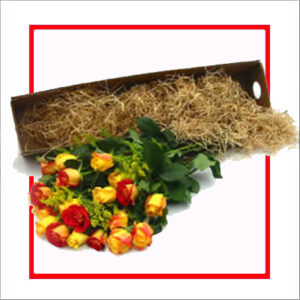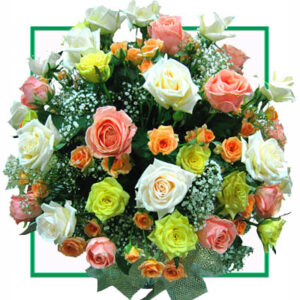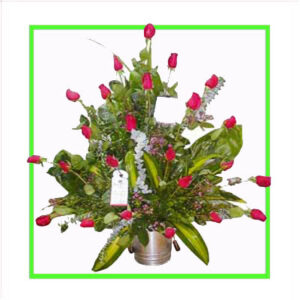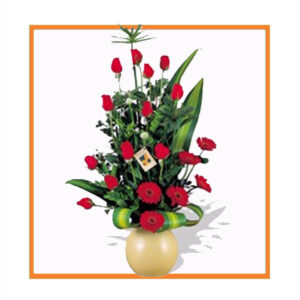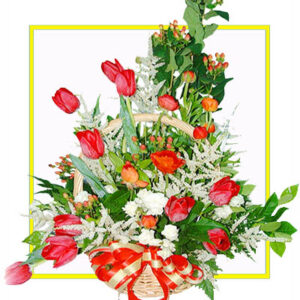A memorial of Mah Laqa Bai in Hyderabad, is an 18th century Asif Jahi architecture, it was restored using funds donated by the Federal government of the United States.
A metalware handicraft known as Bidri ware was popularised in the region in the 18th century. Bidri ware is a Geographical Indication (GI) tagged craft of India. Kalamkari, a hand-painted or block-printed cotton textile, is popular in the city. Hyderabad’s museums include the Salar Jung Museum (housing “one of the largest one-man-collections in the world”), the AP State Archaeology Museum, the Nizam Museum, the City Museum and the Birla Science Museum, which contains a planetarium.
According to a 2008 survey by the Centre for Good Governance, 87.6% of the slum-dwelling households are nuclear families, 18% are very poor, with an income of 20000 (US$370) per annum, 73% live below the poverty line (a standard poverty line recognised by the Andhra Pradesh Government is 24000 (US$440) per annum), 27% of the chief wage earners (CWE) are casual labour and 38% of the CWE are illiterate. About 3.72% of the slum children aged 5–14 do not go to school and 3.17% work as child labour, of whom 64% are boys and 36% are girls. The largest employers of child labour are street shops and construction sites. Among the working children, 35% are engaged in hazardous jobs.:59
According to a 2012 report submitted by GHMC to the World Bank, Hyderabad has 1,476 slums with a total population of 1.7 million, of whom 66% live in 985 slums in the “core” of the city (the part that formed Hyderabad before the April 2007 expansion) and the remaining 34% live in 491 in suburban tenements. About 22% of the slum-dwelling households had migrated from different parts of India in the last decade of the 20th century, and 63% claimed to have lived in the slums for over 10 years.:55 Overall literacy in the slums is 60–80% and female literacy is 52–73%. A third of the slums have basic service connections and 90% have water supply lines. There are 405 government schools, 267 government aided schools, 175 private schools and 528 community halls in the slum areas.:70
Among the oldest surviving examples of Nizam architecture in Hyderabad is the Chowmahalla Palace, which was the seat of royal power. It showcases a diverse array of architectural styles, from the Baroque Harem to its Neoclassical royal court. The other palaces built by the Nizams include Falaknuma Palace (inspired by Andrea Palladio villas), Purani Haveli, King Kothi and Bella Vista Palace all of which were built at the peak of the Nizam rule in the 19th century. During Mir Osman Ali Khan’s rule, European, styles along with Indo-Islamic, became prominent. These styles are reflected in the Falaknuma Palace and many civic monuments such as the Hyderabad High Court, Osmania Hospital, Osmania University, Hyderabad and Kachiguda railway stations, State Central Library, City College, Andhra Pradesh Legislature, State Archaeology Museum and Jubilee Hall. Other landmarks of note are the Paigah Palace, Asman Garh Palace, Basheer Bagh Palace, Errum Manzil and Spanish Mosque, which are villas constructed by the Paigah Family.:16-17
Archaeologists excavating near the city have unearthed Iron Age sites that may date from 500 BCE. The region comprising modern Hyderabad and its surroundings was known as Golkonda (“shepherd’s hill”), and was ruled by the Chalukya dynasty from 624 CE to 1075 CE. Following the dissolution of the Chalukya empire into four parts in the 11th century, Golkonda came under the control of the Kakatiya dynasty (1158–1310), whose seat of power was at Warangal, 148 km (92 mi) northeast of modern Hyderabad.
As the seat of the Government of Andhra Pradesh, Hyderabad is home to the Andhra Pradesh Legislature, the state secretariat and the Andhra Pradesh High Court, as well as to various local government agencies. The Lower City Civil Court and the Metropolitan Criminal Court are under the jurisdiction of the High Court.:1 The GHMC area contains 24 State Legislative Assembly constituencies, which come under 5 constituencies of the Lok Sabha (the lower house of the Parliament of India).
Cricket and association football are the most popular sports in Hyderabad. The city has hosted national and international sports events such as the 2002 National Games of India, the 2003 Afro-Asian Games, the 2004 AP Tourism Hyderabad Open women’s tennis tournament, the 2007 Military World Games, the 2009 World Badminton Championships and the 2009 IBSF World Snooker Championship. The Swarnandhra Pradesh Sports Complex is a venue for field hockey, and the G.M.C. Balayogi Stadium in Gachibowli serves as a venue for athletics and football.
During the British rule, Secunderabad was a well-known sporting centre, and had many parade and polo grounds, race course and other sporting facilities.:18 The city houses many elite clubs formed by the Nizams and the British, such as the Secunderabad Club, the Nizam Club and the Hyderabad Race Club, which is known for its horse racing, especially the annual Deccan derby. The Andhra Pradesh Motor Sports Club organises popular events such as the Deccan 1/4 Mile Drag, TSD Rallies and 4×4 off-road rallying. The Hyderabad Golf Club has an eighteen-hole golf course. Notable international sportspeople from Hyderabad include: cricketers Ghulam Ahmed, M. L. Jaisimha, Mohammed Azharuddin, V. V. S. Laxman, Venkatapathy Raju, Shivlal Yadav, Arshad Ayub and Noel David; football players Syed Abdul Rahim, Syed Nayeemuddin and Shabbir Ali; tennis player Sania Mirza; badminton players S. M. Arif, Pullela Gopichand, Saina Nehwal, Jwala Gutta and Chetan Anand; hockey players Syed Mohammad Hadi and Mukesh Kumar; and bodybuilder Mir Mohtesham Ali Khan.
Every day, Hyderabad produces around 4,500 tonnes of solid waste, which is transported from collection units in Imlibun, Yousufguda and Lower Tank Bund to the dumpsite in Jawaharnagar. Disposal of this waste is managed by the Integrated Solid Waste Management project which was started by the GHMC in 2010. In addition to the large amount of solid waste generated, rapid urbanisation and increased economic activity has also led to increased industrial waste, air, noise and water pollution, which is regulated by the Andhra Pradesh Pollution Control Board (APPCB). The contribution of different sources to air pollution in 2006 was: 20–50% from vehicles, 40–70% from a combination of vehicle discharge and road dust, 10–30% from industrial discharges and 3–10% from the burning of household rubbish. Deaths resulting from atmospheric particulate matter are estimated at 1,700–3,000 each year. Ground water around Hyderabad, which has a hardness of up to 1000 ppm, around three times higher than is desirable, is the main source of drinking water but the increasing population and consequent increase in demand has led to a decline in not only ground water but also dam levels. This shortage is further exacerbated by inadequately treated effluent discharged from industrial treatment plants polluting the water sources of the city.
Following the independence of India from British rule, the Nizam declared his intention to remain independent rather than become part of the Indian Union. The Hyderabad State Congress, with the support of the Indian National Congress and the Communist Party of India, began agitating against Nizam VII in 1948. On 17 September 1948, the Indian Army took control of Hyderabad State after an invasion codenamed Operation Polo. With the defeat of his forces, Nizam VII capitulated to the Indian Union by signing the “Instrument of Accession”, which made him the Rajpramukh (Princely Governor) of the state until 31 October 1956. Between 1946 and 1951, the Communist Party of India fomented the Telangana uprising against the feudal lords of the Telangana region and later against the princely state of Hyderabad. The Constitution of India, which became effective on 26 January 1950, made Hyderabad State one of the part B states of India, with Hyderabad City continuing to be the capital. In his 1955 report Thoughts on Linguistic States, B. R. Ambedkar, then chairman of the Drafting Committee of the Indian Constitution, proposed designating the city of Hyderabad as the second capital of India because of its amenities and strategic central location. Since 1956, the Rashtrapati Nilayam in Hyderabad has been the second official residence and business office of the President of India.
Heavy rain from the south-west summer monsoon falls on Hyderabad between June and September, supplying it with most of its annual rainfall of 812.5 mm (32 in). The highest total monthly rainfall, 181.5 mm (7 in), occurs in September. The heaviest rainfall recorded in a 24-hour period was 241 mm (9 in) on 24 August 2000. The highest temperature ever recorded was 45.5 °C (114 °F) on 2 June 1966, and the lowest was 8 °C (46 °F) on 8 January 1946. The city receives 2,731 hours of sunshine per year; maximum daily sunlight exposure occurs in February.
Hindus form the majority of Hyderabad’s population. Muslims are present throughout the city and predominate in and around the Old City. There are also Christian, Sikh, Jain, Buddhist and Parsi communities, and iconic temples, mosques and churches can be seen. According to the 2001 census, Hyderabad district’s religious make-up was: Hindus (55.41%), Muslims (41.17%), Christians (2.43%), Jains (0.43%), Sikhs (0.29%) and Buddhists (0.02%); 0.23% did not state any religion.
Historically, Hyderabad was known for its pearl and diamond trading centres. Industrialisation brought major Indian manufacturing, R&D, and financial institutions to the city, such as the Bharat Heavy Electricals Limited, the Defence Research and Development Organisation, the Centre for Cellular and Molecular Biology and the National Mineral Development Corporation. The formation of an information technology (IT) Special Economic Zone (SEZ) by the state agencies attracted global and Indian companies to set up operations in the city. The emergence of pharmaceutical and biotechnology industries during the 1990s earned it the titles of “India’s pharmaceutical capital” and the “Genome Valley of India”. The Telugu film industry is based in Hyderabad.
Hussain Sagar lake, built during the reign of the Qutb Shahi dynasty, was once the source of drinking water for Hyderabad.
Hyderabad (i/’ha?d?r?bæd/) is the capital city of the southern Indian state of Andhra Pradesh. Occupying 650 square kilometres (250 sq mi) on the banks of the Musi River, it is also the largest city in the state. As of 2011, the population of the city was 6.8 million with a metropolitan population of 7.75 million, making it India’s fourth most populous city and sixth most populous urban agglomeration.
Hyderabad emerged as the foremost centre of culture in India, when the Mughal Empire in Delhi declined in 1857 AD. The migration of performing artists to the city particularly from the north and west of the Indian sub continent, under the patronage of the Nizam, enriched the cultural milieu. The city is noted for the mingling of North and South Indian linguistic and cultural traits and for the coexistence of Hindu and Muslim traditions.:viii Telugu and Urdu are the languages most commonly spoken. Traditional Hyderabadi garb is Sherwani and Kurta–Paijama for men and Khara Dupatta and Salwar kameez for women. Muslim women commonly wear burqas and hijabs in public. Most youth wear western clothing. Festivals celebrated in Hyderabad include Ganesh Chaturthi, Diwali, Bonalu, Bathukamma, Eid ul-Fitr and Eid al-Adha.
Hyderabad features many heritage buildings constructed during Qutb shahi and Nizam eras, showcasing Indo-Islamic architecture infliuenced by Medieval, Mughal and European styles. After the 1908 flooding of the Musi River, the city was expanded and civic monuments constructed, particularly during the rule of Mir Osman Ali Khan (the VIIth Nizam), whose patronage of architecture led to him being referred to as the maker of modern Hyderabad. In 2012, the government of India declared Hyderabad the first “Best heritage city of India”.
Hyderabad has a history of trade in precious gems; its role in the pearl trade has given it the name, “City of Pearls” and up until the 18th century, the city was also the only global trading centre for large diamonds. Industrialisation began under the Nizams in the late 19th century, helped by railway expansion that connected the city with major ports. From the 1950s to the 1970s, Indian enterprises, such as Bharat Heavy Electricals Limited (BHEL), National Mineral Development Corporation (NMDC), Bharat Electronics (BE), Electronics Corporation of India Limited (ECIL), Defence Research and Development Organisation (DRDO), Hindustan Aeronautics Limited (HAL), Centre for Cellular & Molecular Biology (CCMB), Centre for DNA Fingerprinting and Diagnostics (CDFD), Andhra Bank (AB) and State Bank of Hyderabad (SBH) were established in the city. The city is home to the Hyderabad Securities formerly known as Hyderabad Stock Exchange (HSE), and houses the regional office of Securities and Exchange Board of India (SEBI). The growth of the financial services sector has helped Hyderabad evolve from a traditional manufacturing city to a cosmopolitan industrial service centre. Since the 1990s, the growth of information technology (IT), IT-enabled services, insurance and financial institutions has expanded the service sector, and these primary economic activities have boosted the ancillary sectors of trade and commerce, transport, storage, communication, real estate and retail.
Hyderabad has a tropical wet and dry climate (Köppen Aw) bordering on a hot semi-arid climate (Köppen BSh). The annual mean temperature is 26 °C (78.8 °F); monthly mean temperatures are 21–32 °C (70–90 °F). Summers (March–June) are hot and humid, with average highs in the mid 30s Celsius; maximum temperatures often exceed 40 °C (104 °F) between April and June. Winter lasts for only about 2 1/2 months, during which the lowest temperature occasionally dips to 10 °C (50 °F) in December and January. May is the hottest month, when daily temperatures range from 26 to 38.8 °C (79 to 102 °F); January, the coldest, has temperatures varying from 14.7 to 28.6 °C (58 to 83 °F). Temperatures in the evenings and mornings are generally cooler because of the city’s moderate elevation.
Send Flowers to Hyderabad
CopyRights © 2024 Glowyflowers.com. (SV Mobile Teleshoppe Private Limited.)All Rights Reserved
Product has been added to your cart







































